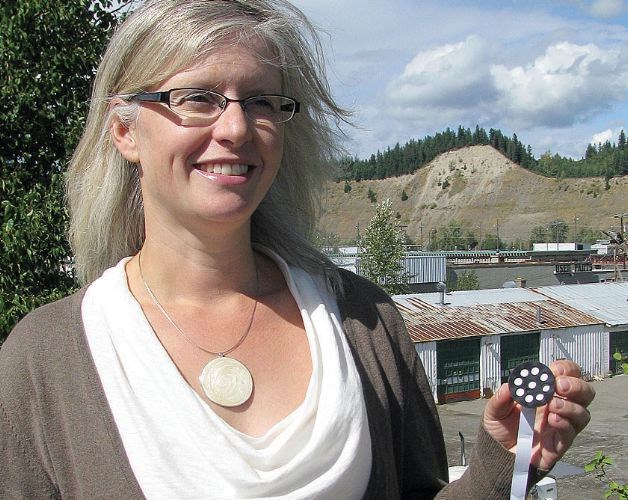Northern Health is encouraging Prince George residents to protect themselves from a silent killer in their homes.
Radon is the second-leading cause of lung cancer after smoking. Radon gas is produced as radioactive uranium decays. Local residents living in older homes near the Nechako River or where it once flowed should have their houses checked for radon.
The colourless, odourless gas seeps into houses through cracks in the foundation and if undetected, can pose a health risk. According to the B.C. Centre for Disease Control, there's a one in three chance Prince George residences have higher radon levels than what Health Canada considers acceptable.
In a voluntary study of residents who used radon test kits in their homes and had the detectors analyzed, tests revealed the northwest corner of the Bowl and the North Nechako areas of the city had the highest radon concentrations.
"We've had high results from all over the city and you can fix it, you just need to know about it first," said public health protection officer Kim Menounos, who leads the Healthy Community Environments Health Protection branch of Northern Health.
"In the northwest part of the bowl, three out of four houses had above the guideline of 200 becquerels per cubic metre. Anything that historically received sediment from the Nechako River [is at a higher risk of radon seepage]. My husband (UNBC associate professor Brian Menounos) does geomorphology and he mapped out all the sources of uranium from rivers that were feeding the Prince George area and it's easy to see that the river feeds those kinds of gravel."
Ten of the 24 city residences tested that showed a concentration of radon greater than 600 becquerels per cubic metre were in the northwest bowl area of the city between Foothills Boulevard and Highway 97, in an area bordered by 15th Avenue to the south and the Nechako River to the north. Six of the eight houses tested on the north bank of the Nechako west of Foothills had red-zone radon levels.
"Our information is voluntary data and it's elevated just because people already may have a concern about radon in their home, so our results are not as accurate as [random] survey results," said Menounos. "Three-quarters of the homes in the Nechako area don't necessarily have high radon, but our results show that more than half that have been tested in that area are high."
Clearwater, Barriere, and Castlegar are the most likely B.C. cities to have high radon readings, while Prince George also ranks in the province's top 10.
"Prince George is really big compared to Clearwater, so the number of people affected might be a lot higher," said Menounos. "We have high results all over the north, and with the exception of the coast, basically every area in B.C. is at some risk. Uranium is in the soil all over the world and we need to raise awareness about it."
Radon test kits are available for $30 each at the Northern Health office on the third floor, 1600 Third Ave. in the Native Friendship Centre. Several B.C. retailers and hardware stores sell test kits throughout the province. For more information on radon testing and retail locations, phone 250-565-2150 or email [email protected].
Since the radon testing program began in 2009, Northern Health has sold about 600 test kits, but only about 200 have been returned from homeowners for testing.
Sampling takes a minimum of three months and up to a full year. Fall/winter is the best time because radon levels tend to increase during cold-weather months when people are using furnaces, which results in negative air pressure conditions that can draw more air from the soil into the house.
The cost of fixing a radon problem is several thousand dollars, similar to the cost of replacing a furnace.
A mitigating contractor has to drill through the basement floor and install an active soil depressurization system. A vent pipe that runs to the outside of an exterior wall away from all widows or building openings is installed underneath the floor, connected to a continuously-running fan, which creates a negative pressure to draw the air out from underneath the house.
This fall, Menounos is launching a Northern Health initiative to have all health services buildings tested for radon.
She also would like to see the provincial or federal governments support homeowners with testing and mitigation grants, and is pushing for building code changes to require contractors to install soil depressurizing systems during house construction, which would reduce the cost of fixing radon problems.



